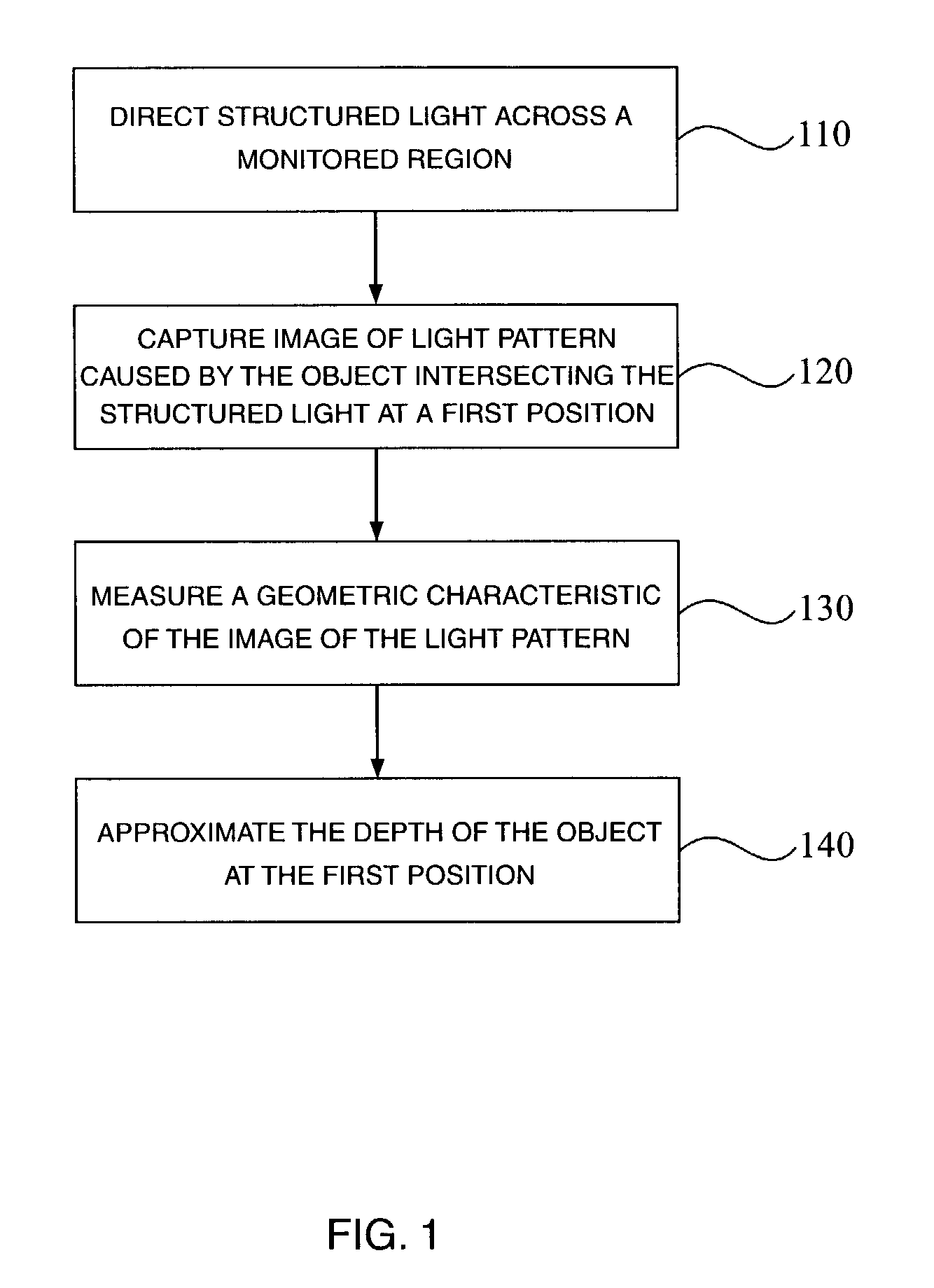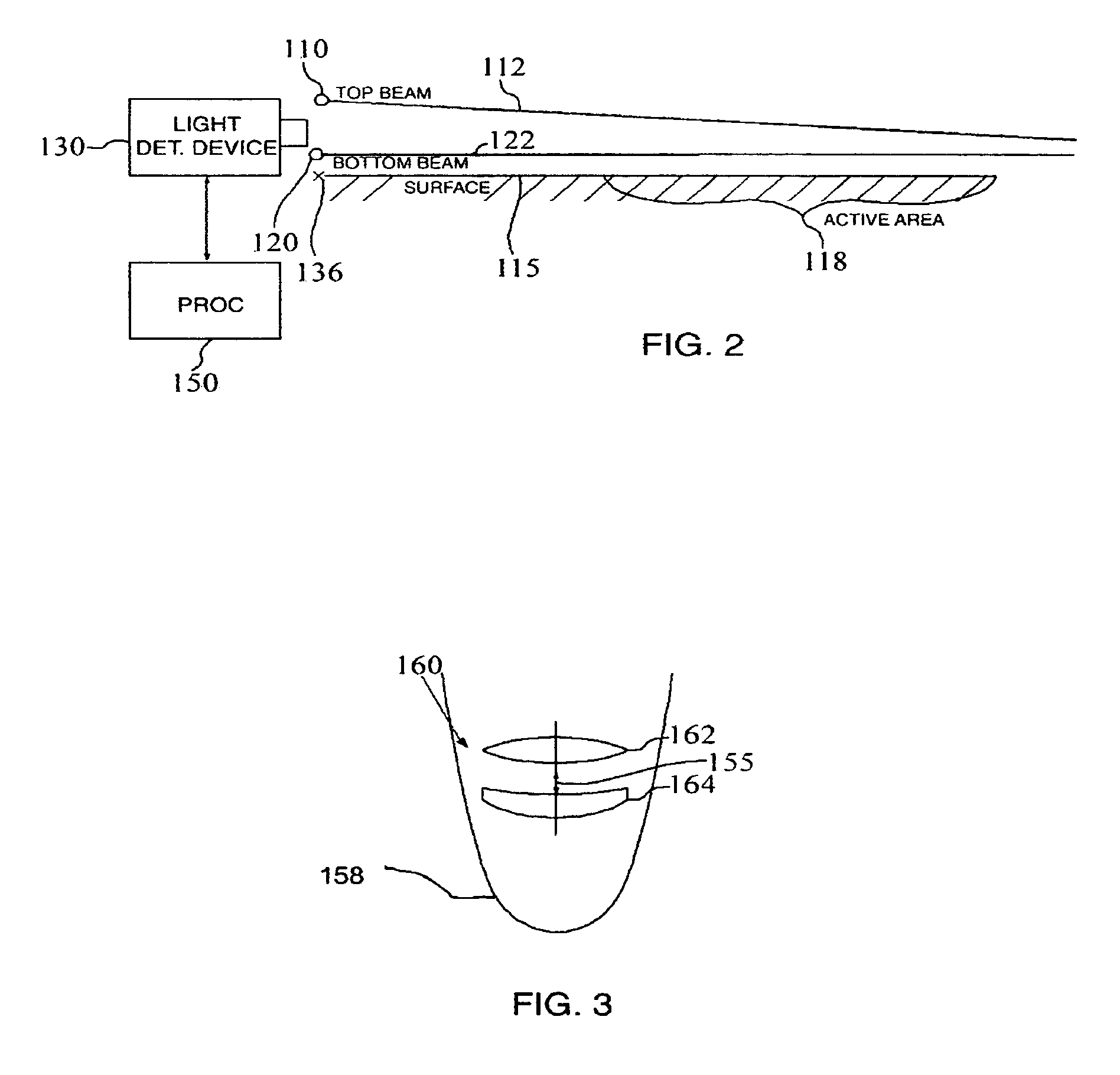Method and apparatus for approximating depth of an object's placement onto a monitored region with applications to virtual interface devices
a virtual interface device and object placement technology, applied in static indicating devices, instruments, reradiation, etc., can solve the problems of difficulty in actually inputting messages using their small touch pads, and inability to accurately detect the depth of the placement of objects
- Summary
- Abstract
- Description
- Claims
- Application Information
AI Technical Summary
Benefits of technology
Problems solved by technology
Method used
Image
Examples
Embodiment Construction
[0033]Embodiments of the invention describe methods and apparatuses for approximating depth of an object's placement onto a monitored region with applications to virtual interface devices. In the following description, for the purposes of explanation, numerous specific details are set forth in order to provide a thorough understanding of the present invention. It will be apparent, however, that the present invention may be practiced without these specific details. In other instances, well-known structures and devices are shown in block diagram form in order to avoid unnecessarily obscuring the present invention.
[0034]A. Overview
[0035]Embodiments of the invention encompass techniques for the determination of depth of an object that is placed onto a monitored region. The depth is determined relative to a position where the object is being viewed. Embodiments of the invention also include electronic devices that have components for performing such techniques.
[0036]An embodiment of the ...
PUM
 Login to View More
Login to View More Abstract
Description
Claims
Application Information
 Login to View More
Login to View More - R&D
- Intellectual Property
- Life Sciences
- Materials
- Tech Scout
- Unparalleled Data Quality
- Higher Quality Content
- 60% Fewer Hallucinations
Browse by: Latest US Patents, China's latest patents, Technical Efficacy Thesaurus, Application Domain, Technology Topic, Popular Technical Reports.
© 2025 PatSnap. All rights reserved.Legal|Privacy policy|Modern Slavery Act Transparency Statement|Sitemap|About US| Contact US: help@patsnap.com



